A Complete Guide to
One Coat Dash Cover

What is Pebbledash?
Pebbledash is a style of external wall covering. It is made by applying a layer of mortar to a wall and then blasting hundreds of tiny pebbles against the wall. Pebbledash is a distinct style and, in the UK, can be seen in many post-WW1 houses. This is because it is a cheap, relatively durable, and quick way to cover shoddy brickwork.
That said, pebbledash can cause problems later down the line. It is common for the pebbles to drop over time, leaving your external walls exposed to the elements. The pebbledash is also liable to cracking, which can lead to water ingress. In time, this can lead to pebbledash falling away from the wall. It can also be extremely costly to remove it if, at a later date, you want to revert back to the original brick finish of the house.
However, this costly and painstaking task can be avoided. There are two accepted ways of going about covering pebbledash. The first is to install an insulation board over the pebbledash and the second option is to apply OCDC (One Coat Dash Cover) over it. This guide will discuss the second method of applying OCDC.
We have created a handy buyers guide to equip you with all the knowledge you will need to understand the process of covering pebbledash with OCDC.
What is OCDC?
OCDC is short for the EWI-065 One Coat Dash Cover. OCDC is a cost-effective and quick way of covering over pebbledash.
It essentially transforms the look of the external walls of your pebbledash-covered property in just one coat. The One Coat Dash Cover is a lightweight and flexible solution that provides a robust base. Since it is a lightweight and breathable formula, it doesn’t put pressure on the pebbledash. Therefore, any trapped moisture within the pebbledash can escape easily and moisture build-up is minimised.
1.Priming the Pebbledash
Prior to the application of OCDC, you must prime the pebbledash. This ensures your OCDC system will last. In this instance, we highly recommend you use the EWI-310 Universal Primer. This works to create a suitably abrasive surface for One Coat Dash Cover to adhere to.
Before priming, you should be sure to remove loose elements from the surface and check for structural stability if painted.
EWI-310 Universal Primer’s coverage is 15L/50m2 and has a drying time of 4 hours per coat.
-
Universal Primer (EWI-310) – 20kg
Rated 4.40 out of 5£64.82 Incl. VAT£54.02 Excl. VAT£72.04 Incl. VAT£60.03 Excl. VAT
2.Preparing the OCDC
One Coat Dash Cover comes in a dry mix bag of 25kg. Once opened, you should use an electric paddle mix to combine the contents of the bag with 6.3 litres of clean, potable water. To achieve the recommended consistency, we suggest mixing the basecoat mixture for 2-3 minutes.
Once mixed, the time you will have to use the mixture can vary depending on the temperature it is stored at. For example, if stored at a temperature of +20oC, you will have approximately 3 hours to use the mixture before it dries. If stored at +25oC, you will have approximately 1 hour.
The coverage of the mixture is 2.5m2 per 25kg bag.
-
One Coat Dash Cover (OCDC) (EWI-065) – 25kg
Rated 4.60 out of 5£15.24 Incl. VAT£12.70 Excl. VAT£21.19 Incl. VAT£17.66 Excl. VAT
3. Applying the OCDC
EWI-065 OCDC is extremely breathable and lightweight. As such, it can be applied up to a thickness of 20mm in one go, using a spray machine or plastering trowel. It should be noted that, should you wish to apply two coats, you should not exceed a 50mm thickness for the basecoat. We recommend priming the first pass of OCDC with EWI-310 Universal Primer to produce a mechanical key.
Following this application, your next port of call should be to embed it with a layer of fibreglass mesh.
At EWI store, we offer two high strength meshes to suit your project’s needs. Both meshes are coated with acrylic acid copolymer liquid for a long-lasting effect. Below is a breakdown of each mesh’s capabilities:
- Orange Fibreglass Mesh: For guaranteed strength and flexibility. This mesh is water-resistant and protects against alkali damage and aging. 1 x 50m2 roll covers 42.5m2 when overlapped.
- Panzer Fibreglass Mesh: Our strongest mesh available guarantees a premium level of impact and crack resistance against the elements. 1 x 25m2 roll covers approximately 22.5m2 when overlapped.
-
Orange Fibreglass Mesh – 50m²
Rated 5.00 out of 5£57.48 Incl. VAT£47.90 Excl. VAT -
Panzer Fibreglass Reinforcement Mesh – 330g 25m²
Rated 4.00 out of 5£59.99 Incl. VAT£49.99 Excl. VAT -
One Coat Dash Cover (OCDC) (EWI-065) – 25kg
Rated 4.60 out of 5£15.24 Incl. VAT£12.70 Excl. VAT£21.19 Incl. VAT£17.66 Excl. VAT
4. Applying the Decorative Finish
Once the basecoat layer has been set, you can apply a decorative finish. For this layer, you have the option of either applying a render or a paint.
If you decide to apply a decorative render, you will need to apply the Top Coat Primer between the basecoat and render to aid adhesion and reduce suction.
Once the primer has dried, a Silicone render can be applied. We highly recommend using our EWI-075 Silicone Render. EWI-075 Silicone Render is breathable, hydrophobic, and self-cleaning. This ensures a long-lasting exterior for years to come.
On the other hand, you can choose to paint over the substrate. In this instance, we suggest the EWI-005 Silicone Paint. This works to create a breathable, waterproof surface that is highly resistant to environmental pollutants.
-
Silicone Render (EWI-075) – 25KG
Rated 4.83 out of 5From £83.99 Incl. VATFrom £69.99 Excl. VAT -
Silicone Paint (EWI-005) – 15 Litres
From £108.79 Incl. VATFrom £90.29 Incl. VATFrom £75.24 Excl. VAT
Download our Complete Guides
All products mentioned are available in the EWI Store. If you have any further questions, our Sales team will be happy to assist on 0203 034 00 22.
You can download a copy of our complete guide below.
Explore our other solutions...
Your cart
Trade Account Login

We use cookies on our website to give you the most relevant experience by remembering your preferences and repeat visits. By clicking “Accept All”, you consent to the use of ALL the cookies. However, you may visit "Cookie Settings" to provide personalised consent.
Manage consent
Privacy Overview
This website uses cookies to improve your experience while you navigate through the website. Out of these, the cookies that are categorized as necessary are stored on your browser as they are essential for the working of basic functionalities of the website. We also use third-party cookies that help us analyze and understand how you use this website. These cookies will be stored in your browser only with your consent. You also have the option to opt-out of these cookies. But opting out of some of these cookies may affect your browsing experience.
Necessary cookies are absolutely essential for the website to function properly. These cookies ensure basic functionalities and security features of the website, anonymously.
| Cookie | Duration | Description |
|---|---|---|
| __stripe_mid | 1 year | This cookie is set by Stripe payment gateway. This cookie is used to enable payment on the website without storing any patment information on a server. |
| __stripe_sid | 30 minutes | This cookie is set by Stripe payment gateway. This cookie is used to enable payment on the website without storing any patment information on a server. |
| _GRECAPTCHA | 5 months 27 days | This cookie is set by the Google recaptcha service to identify bots to protect the website against malicious spam attacks. |
| apbct_cookies_test | session | CleanTalk sets this cookie to prevent spam on comments and forms and act as a complete anti-spam solution and firewall for the site. |
| apbct_page_hits | session | CleanTalk sets this cookie to prevent spam on comments and forms and act as a complete anti-spam solution and firewall for the site. |
| apbct_prev_referer | session | Functional cookie placed by CleanTalk Spam Protect to store referring IDs and prevent unauthorized spam from being sent from the website. |
| apbct_site_landing_ts | session | CleanTalk sets this cookie to prevent spam on comments and forms and act as a complete anti-spam solution and firewall for the site. |
| apbct_site_referer | 3 days | This cookie is placed by CleanTalk Spam Protect to prevent spam and to store the referrer page address which led the user to the website. |
| apbct_timestamp | session | CleanTalk sets this cookie to prevent spam on comments and forms and act as a complete anti-spam solution and firewall for the site. |
| apbct_urls | 3 days | This cookie is placed by CleanTalk Spam Protect to prevent spam and to store the addresses (urls) visited on the website. |
| AWSALBCORS | 7 days | This cookie is managed by Amazon Web Services and is used for load balancing. |
| cookielawinfo-checkbox-advertisement | 1 year | Set by the GDPR Cookie Consent plugin, this cookie is used to record the user consent for the cookies in the "Advertisement" category . |
| cookielawinfo-checkbox-analytics | 11 months | This cookie is set by GDPR Cookie Consent plugin. The cookie is used to store the user consent for the cookies in the category "Analytics". |
| cookielawinfo-checkbox-functional | 11 months | The cookie is set by GDPR cookie consent to record the user consent for the cookies in the category "Functional". |
| cookielawinfo-checkbox-necessary | 11 months | This cookie is set by GDPR Cookie Consent plugin. The cookies is used to store the user consent for the cookies in the category "Necessary". |
| cookielawinfo-checkbox-others | 11 months | This cookie is set by GDPR Cookie Consent plugin. The cookie is used to store the user consent for the cookies in the category "Other. |
| cookielawinfo-checkbox-performance | 11 months | This cookie is set by GDPR Cookie Consent plugin. The cookie is used to store the user consent for the cookies in the category "Performance". |
| ct_checkjs | session | CleanTalk–Used to prevent spam on our comments and forms and acts as a complete anti-spam solution and firewall for this site. |
| ct_fkp_timestamp | session | CleanTalk sets this cookie to prevent spam on the site's comments/forms, and to act as a complete anti-spam solution and firewall for the site. |
| ct_pointer_data | session | CleanTalk sets this cookie to prevent spam on the site's comments/forms, and to act as a complete anti-spam solution and firewall for the site. |
| ct_ps_timestamp | session | CleanTalk sets this cookie to prevent spam on the site's comments/forms, and to act as a complete anti-spam solution and firewall for the site. |
| ct_sfw_pass_key | 1 month | CleanTalk sets this cookie to prevent spam on comments and forms and act as a complete anti-spam solution and firewall for the site. |
| ct_timezone | session | CleanTalk–Used to prevent spam on our comments and forms and acts as a complete anti-spam solution and firewall for this site. |
| elementor | never | This cookie is used by the website's WordPress theme. It allows the website owner to implement or change the website's content in real-time. |
| viewed_cookie_policy | 11 months | The cookie is set by the GDPR Cookie Consent plugin and is used to store whether or not user has consented to the use of cookies. It does not store any personal data. |
Functional cookies help to perform certain functionalities like sharing the content of the website on social media platforms, collect feedbacks, and other third-party features.
| Cookie | Duration | Description |
|---|---|---|
| __zlcmid | 1 year | This cookie is used by Zendesk live chat and is used to store the live chat ID. |
| bcookie | 2 years | LinkedIn sets this cookie from LinkedIn share buttons and ad tags to recognize browser ID. |
| bscookie | 2 years | LinkedIn sets this cookie to store performed actions on the website. |
| lang | session | LinkedIn sets this cookie to remember a user's language setting. |
| lidc | 1 day | LinkedIn sets the lidc cookie to facilitate data center selection. |
| UserMatchHistory | 1 month | LinkedIn sets this cookie for LinkedIn Ads ID syncing. |
Performance cookies are used to understand and analyze the key performance indexes of the website which helps in delivering a better user experience for the visitors.
| Cookie | Duration | Description |
|---|---|---|
| __utma | 2 years | This cookie is set by Google Analytics and is used to distinguish users and sessions. The cookie is created when the JavaScript library executes and there are no existing __utma cookies. The cookie is updated every time data is sent to Google Analytics. |
| __utmb | 30 minutes | Google Analytics sets this cookie, to determine new sessions/visits. __utmb cookie is created when the JavaScript library executes and there are no existing __utma cookies. It is updated every time data is sent to Google Analytics. |
| __utmc | session | The cookie is set by Google Analytics and is deleted when the user closes the browser. It is used to enable interoperability with urchin.js, which is an older version of Google Analytics and is used in conjunction with the __utmb cookie to determine new sessions/visits. |
| __utmt | 10 minutes | Google Analytics sets this cookie to inhibit request rate. |
| __utmv | 2 years | The __utmv cookie is set on the user's device, to enable Google Analytics to classify the visitor. |
| __utmz | 6 months | Google Analytics sets this cookie to store the traffic source or campaign by which the visitor reached the site. |
| sib_cuid | 6 months | Purechat uses this cookie to send data to purechat.com, to connect visitors to the reservation team and track visitors to stay on portal. |
| SRM_B | 1 year 24 days | Used by Microsoft Advertising as a unique ID for visitors. |
Analytical cookies are used to understand how visitors interact with the website. These cookies help provide information on metrics the number of visitors, bounce rate, traffic source, etc.
| Cookie | Duration | Description |
|---|---|---|
| _ga | 2 years | The _ga cookie, installed by Google Analytics, calculates visitor, session and campaign data and also keeps track of site usage for the site's analytics report. The cookie stores information anonymously and assigns a randomly generated number to recognize unique visitors. |
| _gat_gtag_UA_61069204_2 | 1 minute | Set by Google to distinguish users. |
| _gat_UA-61069204-2 | 1 minute | A variation of the _gat cookie set by Google Analytics and Google Tag Manager to allow website owners to track visitor behaviour and measure site performance. The pattern element in the name contains the unique identity number of the account or website it relates to. |
| _gcl_au | 3 months | Provided by Google Tag Manager to experiment advertisement efficiency of websites using their services. |
| _gid | 1 day | Installed by Google Analytics, _gid cookie stores information on how visitors use a website, while also creating an analytics report of the website's performance. Some of the data that are collected include the number of visitors, their source, and the pages they visit anonymously. |
| _uetsid | 1 day | This cookies are used to collect analytical information about how visitors use the website. This information is used to compile report and improve site. |
| CONSENT | 2 years | YouTube sets this cookie via embedded youtube-videos and registers anonymous statistical data. |
Advertisement cookies are used to provide visitors with relevant ads and marketing campaigns. These cookies track visitors across websites and collect information to provide customized ads.
| Cookie | Duration | Description |
|---|---|---|
| _fbp | 3 months | This cookie is set by Facebook to display advertisements when either on Facebook or on a digital platform powered by Facebook advertising, after visiting the website. |
| ANONCHK | 10 minutes | The ANONCHK cookie, set by Bing, is used to store a user's session ID and also verify the clicks from ads on the Bing search engine. The cookie helps in reporting and personalization as well. |
| fr | 3 months | Facebook sets this cookie to show relevant advertisements to users by tracking user behaviour across the web, on sites that have Facebook pixel or Facebook social plugin. |
| MUID | 1 year 24 days | Bing sets this cookie to recognize unique web browsers visiting Microsoft sites. This cookie is used for advertising, site analytics, and other operations. |
| NID | 6 months | NID cookie, set by Google, is used for advertising purposes; to limit the number of times the user sees an ad, to mute unwanted ads, and to measure the effectiveness of ads. |
| test_cookie | 15 minutes | The test_cookie is set by doubleclick.net and is used to determine if the user's browser supports cookies. |
| uuid | 6 months | MediaMath sets this cookie to avoid the same ads from being shown repeatedly and for relevant advertising. |
| VISITOR_INFO1_LIVE | 5 months 27 days | A cookie set by YouTube to measure bandwidth that determines whether the user gets the new or old player interface. |
| YSC | session | YSC cookie is set by Youtube and is used to track the views of embedded videos on Youtube pages. |
| yt-remote-connected-devices | never | YouTube sets this cookie to store the video preferences of the user using embedded YouTube video. |
| yt-remote-device-id | never | YouTube sets this cookie to store the video preferences of the user using embedded YouTube video. |
| yt.innertube::nextId | never | This cookie, set by YouTube, registers a unique ID to store data on what videos from YouTube the user has seen. |
| yt.innertube::requests | never | This cookie, set by YouTube, registers a unique ID to store data on what videos from YouTube the user has seen. |
Other uncategorized cookies are those that are being analyzed and have not been classified into a category as yet.
| Cookie | Duration | Description |
|---|---|---|
| _clck | 1 year | No description |
| _clsk | 1 day | No description |
| _uetvid | 1 year 24 days | No description available. |
| AnalyticsSyncHistory | 1 month | No description |
| apbct_pixel_url | session | No description |
| apbct_visible_fields_0 | session | No description |
| apbct_visible_fields_1 | session | No description |
| apbct_visible_fields_10 | session | No description |
| apbct_visible_fields_2 | session | No description |
| apbct_visible_fields_3 | session | No description |
| apbct_visible_fields_4 | session | No description |
| apbct_visible_fields_5 | session | No description |
| apbct_visible_fields_6 | session | No description |
| apbct_visible_fields_7 | session | No description |
| apbct_visible_fields_8 | session | No description |
| apbct_visible_fields_9 | session | No description |
| ct_checked_emails | session | No description |
| ct_has_scrolled | session | No description |
| ct_mouse_moved | session | No description |
| ct_screen_info | session | No description |
| ictf_master | never | No description available. |
| li_gc | 2 years | No description |
| m | 2 years | No description available. |
| SM | session | No description available. |
| testinfinitycookie | session | No description |
| woocommerce_show_tax | 7 days | No description available. |
| wp_woocommerce_session_c5ac76b408021294cb56bcc27eddf8a1 | 2 days | No description |


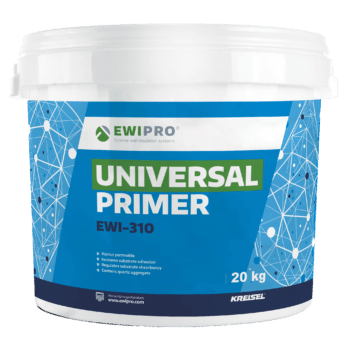
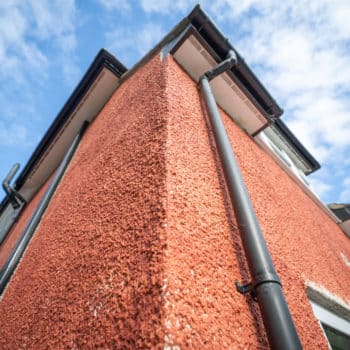
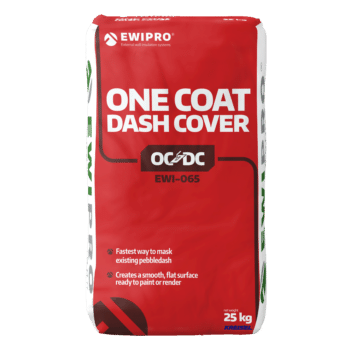
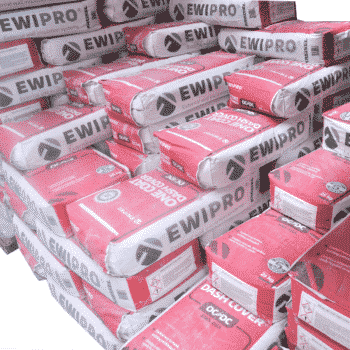
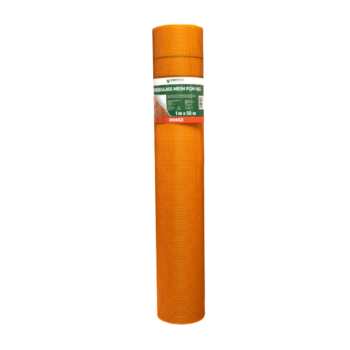
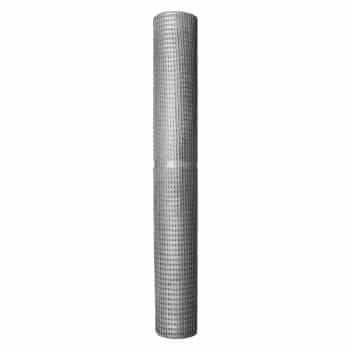

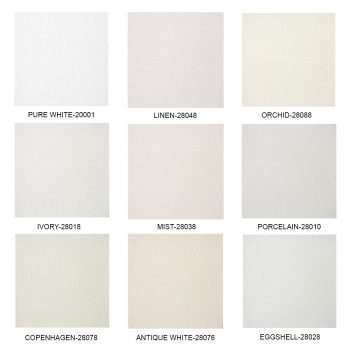
2 thoughts on “One Coat Dash Cover”
Hi Terry,
The Primer is used to help ensure that the OCDC system that you are installing will last. Without it, the system might not be as rigid due the substrate not being prepared as recommended. The Universal Primer mentioned above helps create a more abrasive surface which allows the OCDC to essentially stick better onto the wall. This makes for a stronger system. However, just make sure before you apply the primer to check the pebbledash first and remove any loose bits to help maximise the effectiveness of the Primer.
This ensures you buy very expensive primer.